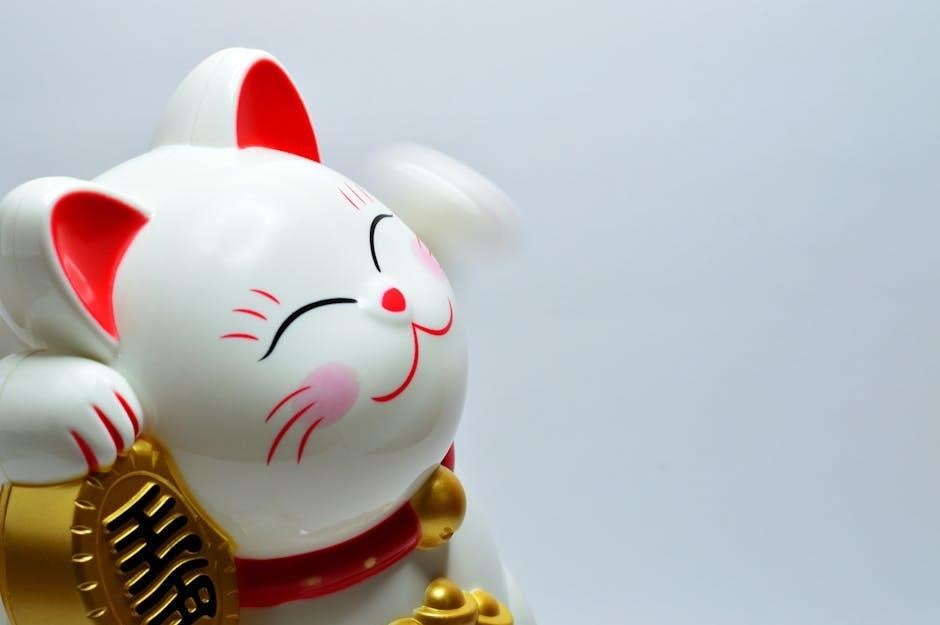Chinese Cinderella PDF: A Comprehensive Guide
This comprehensive guide explores Adeline Yen Mah’s poignant memoir, “Chinese Cinderella,” focusing on its availability in PDF format. We delve into where readers can access the book, ensuring easy access for educational or personal reading purposes, whilst examining the digital accessibility of this moving story.

Overview of “Chinese Cinderella”
“Chinese Cinderella: The True Story of an Unwanted Daughter” is a compelling autobiography by Adeline Yen Mah, detailing her harrowing childhood in 1940s China. Born into a wealthy family, Adeline faces neglect and emotional abuse following her mother’s death shortly after her birth, leading to her being considered a source of bad luck.
The narrative unfolds against the backdrop of a patriarchal Chinese society, where traditional values and familial expectations exacerbate Adeline’s sense of isolation. Her stepmother, Niang, further intensifies her suffering, creating a hostile environment where Adeline yearns for love and acceptance.
Despite the hardships, Adeline finds solace in her academic pursuits and writing, showcasing resilience and determination. Her talent eventually earns her recognition, offering a glimmer of hope amidst despair. The book explores themes of family, identity, and the power of self-discovery in the face of adversity.
“Chinese Cinderella” offers a poignant glimpse into a young girl’s struggle for survival and self-worth. It highlights the importance of inner strength and the pursuit of dreams, even when confronted with seemingly insurmountable obstacles. The story resonates with readers of all ages, inspiring empathy and a deeper understanding of the human spirit.
Adeline Yen Mah: Author and Her Life
Adeline Yen Mah, the author of “Chinese Cinderella,” was born in Tianjin, China, in 1937. Her life experiences heavily influenced her writing, particularly her poignant memoir detailing her challenging childhood. Growing up in a wealthy but emotionally distant family, Adeline faced significant adversity and neglect.
Her mother’s death shortly after her birth led to her being considered bad luck, resulting in her being ostracized by her family, especially her stepmother, Niang. Despite the lack of emotional support, Adeline excelled academically, finding solace and validation in her studies.
Adeline’s passion for writing emerged early in her life, providing her with an outlet to express her feelings and navigate her difficult circumstances. Her talent eventually led her to study literature and medicine in England, marking a turning point in her life.
After pursuing a successful career as a physician, Adeline Yen Mah dedicated herself to writing, aiming to share her story and inspire others. “Falling Leaves,” her first memoir, garnered critical acclaim, paving the way for “Chinese Cinderella,” which became a beloved and widely read account of her childhood experiences.
Through her writing, Adeline Yen Mah seeks to promote understanding, empathy, and the importance of resilience in the face of adversity.
Plot Summary of “Chinese Cinderella”
“Chinese Cinderella” chronicles the early life of Adeline Yen Mah, beginning with the tragic death of her mother shortly after her birth, an event that marks her as a source of bad luck within her affluent Chinese family. Adeline grows up feeling unwanted and neglected, particularly after her father remarries a Eurasian woman named Niang, who favors her own children and treats Adeline cruelly.
The narrative follows Adeline’s struggles to find love and acceptance amidst the emotional distance and hostility of her family. She seeks solace in her studies, excelling academically as a means of gaining attention and validation. Her relationship with her grandfather, Ye Ye, provides a rare source of comfort and support.
Throughout her childhood, Adeline endures various forms of mistreatment, including being sent to boarding school and being deprived of basic necessities. Despite these hardships, she remains resilient and determined to prove her worth.
A turning point occurs when Adeline wins a writing competition, earning her the opportunity to study literature in England. This pivotal moment represents a chance for her to escape her oppressive home environment and pursue her dreams. The novel concludes with Adeline’s departure for England, filled with hope and anticipation for a brighter future, leaving behind the shadows of her past.
Themes Explored in the Book
“Chinese Cinderella” delves into several profound themes, most notably the devastating impact of familial rejection and the yearning for love and acceptance. Adeline’s experiences highlight the emotional toll of being ostracized and treated as an outsider within one’s own family, showcasing her resilience in the face of such adversity.
Another central theme is the importance of education as a means of empowerment and escape. Adeline’s academic achievements provide her with a sense of purpose and a path toward a better future, offering her a way to transcend her difficult circumstances and pursue her dreams.
The narrative also explores the theme of identity, as Adeline grapples with her sense of self in a family that devalues her. Her journey toward self-discovery involves navigating cultural expectations and societal pressures, ultimately leading her to embrace her own unique identity and pursue her passions;
Furthermore, the book touches upon the theme of injustice, highlighting the unfair treatment and discrimination that Adeline faces due to her gender and perceived bad luck. Despite these challenges, she remains determined to overcome adversity and create a life of her own choosing, demonstrating courage.
Character Analysis: Adeline
Adeline Yen Mah, the protagonist of “Chinese Cinderella,” is a complex and compelling character whose journey resonates deeply with readers. From a young age, she faces neglect and emotional abuse within her own family, shaping her into a resilient and determined individual. Despite being unwanted and unloved, Adeline possesses an unwavering spirit and a thirst for knowledge.
Her intelligence and academic achievements serve as both a refuge and a source of hope, providing her with a sense of purpose in a world that often seems indifferent to her suffering. Adeline’s passion for writing and her vivid imagination allow her to escape the harsh realities of her life and express her innermost thoughts and feelings.
Throughout the narrative, Adeline demonstrates remarkable emotional strength and maturity, navigating complex family dynamics and societal expectations with grace and courage. She yearns for love and acceptance, but she also learns to rely on her own inner resources and find solace in her own company.
Adeline’s character is defined by her resilience, intelligence, and unwavering determination to overcome adversity. Her journey is a testament to the power of the human spirit.
Niang’s Impact on Adeline’s Life
Niang, Adeline Yen Mah’s stepmother, casts a long and dark shadow over her life in “Chinese Cinderella.” As the primary source of Adeline’s suffering, Niang’s presence is a constant reminder of the protagonist’s unwanted status within her own family. Niang’s cold and cruel demeanor creates a hostile environment for Adeline, fostering feelings of isolation, fear, and inadequacy.
Niang’s favoritism towards her own children exacerbates Adeline’s sense of rejection, making her feel like an outsider in her own home. Niang’s manipulative tactics and emotional abuse undermine Adeline’s self-esteem and confidence, leaving her with deep scars that she carries throughout her childhood.
Despite the immense pain and suffering that Niang inflicts upon her, Adeline never loses sight of her own inherent worth. She finds solace in her studies and dreams of a better future, refusing to allow Niang to completely extinguish her spirit. Niang’s cruelty serves as a catalyst for Adeline’s resilience and determination to overcome adversity.
Niang’s impact on Adeline’s life is profound and far-reaching, shaping her into the strong and independent woman.


The Significance of Family in the Narrative
Family dynamics are central to “Chinese Cinderella,” portraying both the potential for profound love and devastating cruelty within familial bonds. Adeline’s experience highlights how family, meant to be a source of support and belonging, can become a battleground of emotional neglect and abuse. The absence of maternal love, coupled with her father’s indifference and Niang’s hostility, creates a void in Adeline’s life, impacting her self-worth and sense of identity.
Despite the toxic environment, Adeline yearns for acceptance and affection from her family, particularly her father. Her siblings, while sometimes offering moments of camaraderie, are largely indifferent or even complicit in Niang’s mistreatment of her. This betrayal underscores the fragility of sibling relationships in the face of parental manipulation.
The narrative also explores the theme of chosen family through Adeline’s relationships with her grandfather and aunt, who provide her with glimpses of warmth and understanding. Their presence offers a counterpoint to the prevailing negativity, demonstrating the power of kinship to transcend blood ties. Ultimately, “Chinese Cinderella” illustrates the enduring impact of family, for better or worse, on shaping an individual’s life.

Historical Context: 1940s China
“Chinese Cinderella” is set against the backdrop of 1940s China, a period marked by immense political and social upheaval. The story unfolds during the aftermath of World War II and the Chinese Civil War, a time of widespread poverty, displacement, and uncertainty. The Yen family’s affluent lifestyle contrasts sharply with the struggles of the majority of the population, highlighting the vast disparities in wealth and opportunity.
The book also subtly reflects the changing social norms and expectations of women in Chinese society. While traditional patriarchal values still hold sway, there are glimpses of a growing desire for female empowerment and independence. Adeline’s ambition to pursue education and a career challenges the conventional roles assigned to women of her time.
Furthermore, the historical context influences the Yen family’s decisions and priorities. Their concerns about maintaining their social standing and protecting their assets amidst political instability shape their treatment of Adeline and their overall family dynamics. The book provides a window into a tumultuous era in Chinese history, enriching our understanding of the characters’ motivations and the challenges they face.
Literary Devices Used by Adeline Yen Mah
Adeline Yen Mah masterfully employs various literary devices to enhance the emotional impact and thematic depth of “Chinese Cinderella.” Her use of vivid imagery brings to life the sights, sounds, and smells of her childhood, immersing readers in the world she experienced. The detailed descriptions of her home, school, and the bustling streets of Shanghai create a strong sense of place and time.
Symbolism plays a significant role in conveying deeper meanings. The character of Cinderella itself acts as a symbol of Adeline’s own feelings of neglect and mistreatment. Through the application of metaphors, Yen Mah skillfully draws parallels between Adeline’s experiences and the plight of the classic fairy tale character.
Yen Mah also uses foreshadowing to create suspense and hint at future events. Subtle clues and suggestive remarks foreshadow the challenges and triumphs that Adeline will encounter throughout her life. Her narrative style is characterized by its simplicity and directness, making the story accessible to a wide range of readers, while retaining the emotional depth.
Reception and Critical Acclaim
“Chinese Cinderella” has garnered widespread critical acclaim for its poignant portrayal of childhood trauma and resilience. Reviewers have praised Adeline Yen Mah’s honest and compelling writing style, which allows readers to connect deeply with her experiences. The book’s ability to evoke empathy and understanding has been a key factor in its positive reception.
Critics have lauded the memoir for its exploration of universal themes such as family dynamics, identity, and the search for belonging. The book’s unflinching depiction of emotional abuse and neglect has sparked important conversations about child welfare and the impact of dysfunctional families.
“Chinese Cinderella” has received numerous awards and accolades, solidifying its place as a significant work of literature. Its accessibility and emotional resonance have made it a popular choice for book clubs, schools, and universities. The book’s enduring appeal is a testament to its powerful message of hope and determination.
Availability of “Chinese Cinderella” in PDF Format
Finding “Chinese Cinderella” in PDF format is relatively straightforward, given its popularity and widespread demand. Numerous online platforms offer the book as a downloadable PDF, catering to readers who prefer digital formats. However, it’s crucial to ensure that the source is reputable and that the download is legal to avoid copyright infringement.
Several online retailers, like Amazon, often offer the Kindle edition of “Chinese Cinderella,” which can be accessed on various devices through the Kindle app. While technically not a PDF, it provides a similar digital reading experience.
Websites dedicated to providing free e-books may also host “Chinese Cinderella” in PDF format, but users should exercise caution when downloading from such sources to protect against malware or viruses. Always prioritize legal and secure download options to support the author and publisher while enjoying the book.
Libraries can also offer digital copies or point you to trusted sources.
Educational Value of the Book
“Chinese Cinderella” holds significant educational value, making it a valuable resource in various academic settings. The memoir offers students a firsthand account of life in 1940s China, providing insights into its culture, social norms, and historical context. Adeline Yen Mah’s narrative fosters empathy by allowing readers to connect with her struggles and triumphs.
The book explores themes of family dynamics, resilience, and the importance of self-worth, prompting critical discussions about identity and the impact of societal expectations. Students can analyze the characters’ motivations and relationships, enhancing their analytical and interpretive skills.
Furthermore, “Chinese Cinderella” exposes students to diverse literary devices, such as imagery, symbolism, and figurative language, enriching their understanding of literary techniques. The memoir encourages students to reflect on their own experiences and develop a deeper understanding of human emotions and relationships.
The book is used in classrooms across multiple grades.
Adaptations and Related Works
While “Chinese Cinderella” is primarily known as a memoir, its powerful narrative has inspired adaptations and connections to other works. Although a direct film adaptation doesn’t exist, the themes of resilience and overcoming adversity resonate with various cinematic and theatrical productions. The story’s universal appeal aligns with Cinderella-esque narratives found in different cultures.
The memoir has been adapted into stage plays for younger audiences, focusing on the core themes of family, identity, and the importance of education. These adaptations aim to make the story accessible and engaging for children, promoting empathy and understanding.
Readers interested in similar themes may explore Adeline Yen Mah’s other works, such as “Falling Leaves,” which delves deeper into her family history and personal journey. Additionally, books exploring the experiences of Chinese immigrants and the challenges of cultural adaptation can provide further context and insight.
The success of “Chinese Cinderella” has sparked discussions about the power of personal narratives and their ability to connect with diverse audiences.